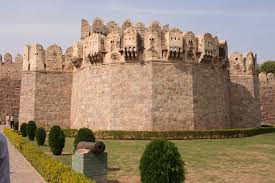
The Golconda Fort empire of the “Qutb Shahi”. Golconda is also known as Golkond. It is surrounded by 7 tombs. It is the capital city of the “Qutb Shahis Dynasty” located in Hyderabad, Telangana. Golconda is flourished as a trade center of Diamonda, so it also called “Golconda Diamonds” because of diamond mines, mainly KOllur Mine. which includes the colorless diamond “Koh-i-Noor” which is now owned by the united kingdom.
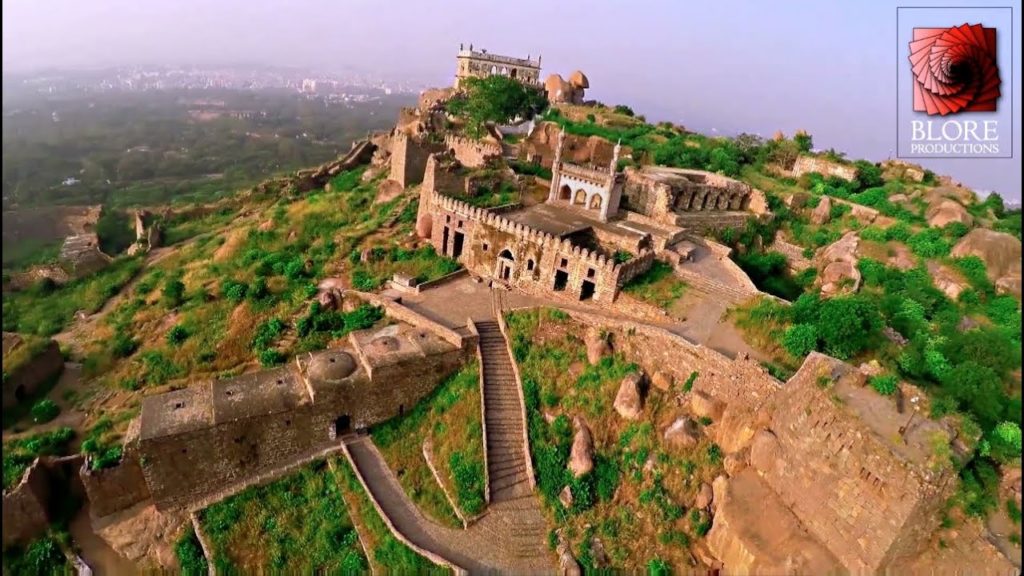
HISTORY OF GOLCONDA
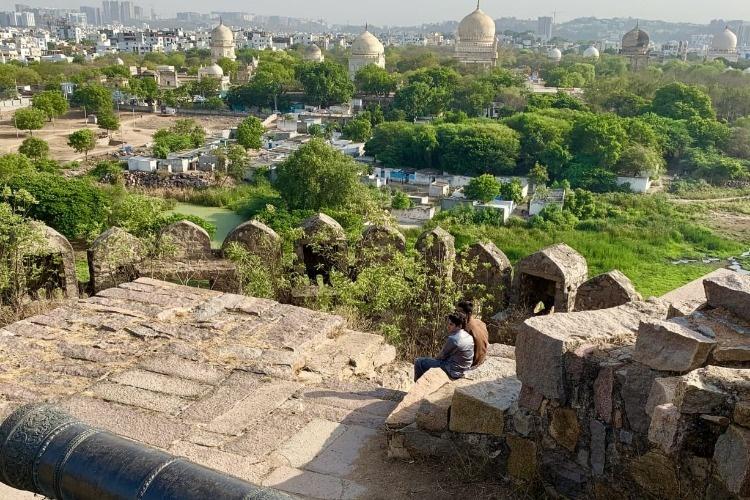
Golconda Fort is firstly known as “Mankal”. The fort was first built by “Kakatiyas” as the part of their western defense with the lines of “Kondapalli Fort”. The fort was built on a granite hill which is 120 meters high and surrounded by battlements. Further, the fort was strengthened by “Rani Rudrama Devi” and “Prataparudra”. The fort was under the control of “Kamma Nayakas”. they occupied Warangal by defeating the “Tughaqi army”. In 1364 as apart of treaty to Bahmani Sultanate by Kamma king. Later by Bahmainda sent “Quli Qutb-ul-Mulk in year 1487-15431 as a governor of Golconda
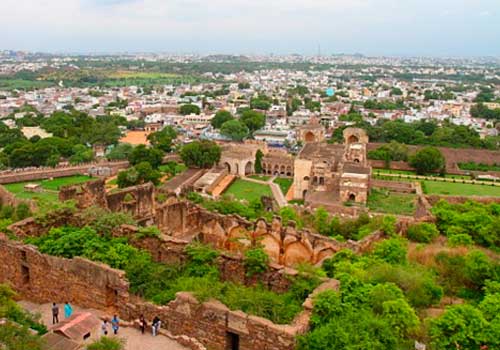
. Around 1501 the fort has established the city as the set of his government In 1538 Bahamani gradually weekend and sultan quli becomes an independent and established “Qutb Shahi Dynasty” in Golconda. The mud fort was expanded by three Qutb Shahi Sultans into present fortification by granite around 5km. The 7km outer wall of the fort was enclosed by the city. in 1687 after eight months led to its fall at the hands of Mugal emperor “Aurangzeb”
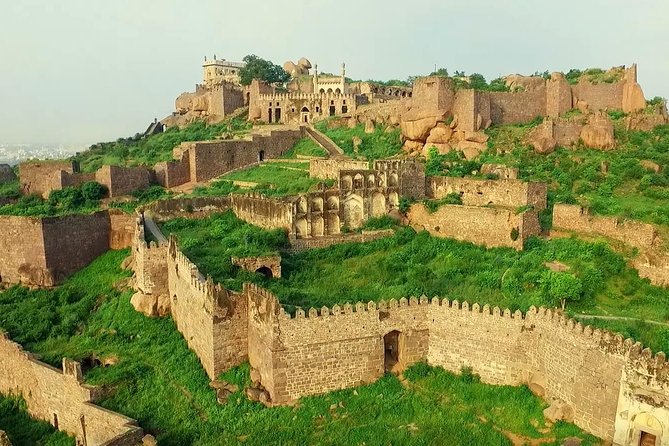
GOLCONDA RULERS
KAKATIYA[1163-1323]
It was a “South Indian” dynasty. whose capital was Orugallu, famously know as Warangal. 13th century–14th century The Delhi Sultanate was eventually conquered.
| Status Empire (Subordinate to Western Chalukyas until 1163) |
| Capital Orugallu(Warangal) |
| Government Monarchy King |
| History • Earliest rulers 900 • Established 1163 • Disestablished 1323 |
| Common languages Sanskrit, Telugu |
| Preceded by Succeeded by Western Chalukya Empire Eastern Chalukyas Bahmani Sultanate Musunuri Nayaks Reddy dynasty Vijayanagara Empire |
Kamma Nayakas
The Kamma Nayakas is also known as Musunuri Dynasty. It was the warriors of the 14th-century.
| Musunuri dynasty |
| 13th century–14th century |
| Capital Warangal |
| Government Monarchy |
| History |
| • Established 13th century |
| • Disestablished 14th century |
Bahamani Sultans
The Bahamani is also known as the Bahmanid Empire or Bahmani Kingdom a museum stat of deccan in south India
| Bahmani Sultanate, 1470 CE |
| Capital Gulbarga (1347–1425) Bidar (1425–1527) |
| Religion Shia Islam |
| Government Monarchy Sultan• • 1347–1358 Ala-ud-Din Bahman Shah • 1525–1527 Kalim-Allah Shah |
| Common languages Persian Deccani Urdu, Marathi, Kannada, Telugu |
| Historical era Late Medieval • Established 3 August 1347 • Disestablished 1527 |
| Currency Taka |
| Preceded by Succeeded by Delhi Vijayanagara Empire Sultanate Bijapur Sultanat Golconda Sultanate Ahmadnagar Sultanate Bidar Sultanate Berar Sultanate |
Qutb Shahi Dynasty
The Qutb Shahi Dynasty is also known as Golconda Sultanate a south India territory.
| Extent of Golconda Sultanate |
| Capital Golconda (1519-1591) Hyderabad (1591-1687) |
| Religion Shia Islam |
| Government Monarchy Qutb Shah • 1512–1543 Sultan Quli Qutb-ul-Mulk • 1543–1550 Jamsheed Quli Qutb Shah • 1543–1550 Subhan Quli Qutb Shah • 1550–1580 Ibrahim Quli Qutb Shah • 1565-161 2 MQuli Qutb Shah • 1611–1626 Sultan Muhammad Qutb Shah • 1611–1626 Abdullah Qutb Shah • 1672-1686 Abul Hasan Qutb Shah |
| History • Established 1518 • Disestablished 1687 |
| Currency Mohur |
| Preceded by Succeeded by Bahmani Mughal Sultanate Empire |
Mughal Empire
The Mughal Empire is also called the Mogul Empire a south Asia early-modern empire.
The empire at its greatest extent, in c. 1700
| Status | Empire |
|---|---|
| Capital | Agra (1526–1540; 1555–1571; 1598–1648)Fatehpur Sikri (1571–1585)Lahore (May 1586 – 1598)Shahjahanabad, Delhi (1648–1857) |
| Common languages | Persian (official and court language)[1]Urdu (language of the ruling classes, later given official status)[2]Arabic (for religious ceremonies)Chagatai Turkic (only initially)Other South Asian languages |
| Religion | Sunni Islam (Hanafi) (1526–1857)Din-i Ilahi (1582–1605) |
| Government | Absolute monarchy, unitary state with federal structure, centralized autocracy Islamic sharia[3] |
| Emperor[a] | |
| • 1526–1530 | Babur (first) |
| • 1837–1857 | Bahadur Shah II (last) |
| Historical era | Early modern |
| • First Battle of Panipat | 21 April 1526 |
| • Empire interrupted by Sur Empire | 1540–1555 |
| • Mughal–Maratha Wars | 1680–1707 |
| • Death of Aurangzeb | 3 March 1707 |
| • Battle of Karnal | 24 February 1739 |
| • Carnatic Wars | 1746–1763 |
| • Battle of Plassey | 1757 |
| • Bengal War | 1759–1765 |
| • Siege of Delhi | 21 September 1857 |
| Area | |
| 1690[5][6] | 4,000,000 km2 (1,500,000 sq mi) |
| Population • 1700[7] | 158,400,000 |
| Currency | Rupee, Taka, dam[8]:73–74 |
| Preceded by Delhi Sultanate Rajput states Chero dynasty Bengal Sultanate Deccan sultanates | Succeeded by Maratha Empire Bengal Subah Durrani Empire Sikh Empire Company rule in India British Raj |
| Outline of South Asian history |
|---|
| Palaeolithic(2,500,000–250,000 BC) [show] |
| Neolithic (10,800–3300 BC) [show] |
| Chalcolithic (3500–1500 BC) [show] |
| Bronze Age (3300–1300 BC) [show] |
| Iron Age (1500–200 BC) [show] |
| Middle Kingdoms (230 BC-AD 1206) [show] |
| Late medieval period (1206–1526) [show] |
| Early modern period (1526–1858) [show] |
| Colonial states (1510–1961) [show] |
| Periods of Sri Lanka [show] |
| National histories [show] |
| Regional histories [show] |
| Specialized histories |
Hey there ,Thankfulness to my father who shared with me on the topic of this webpage, this website is actually awesome. vielen dank
https://waterfallmagazine.com
This website was… how do you say it? Relevant!! Finally I have found something that helped me.
Cheers!
hi, your site is amazing.Following your articles.